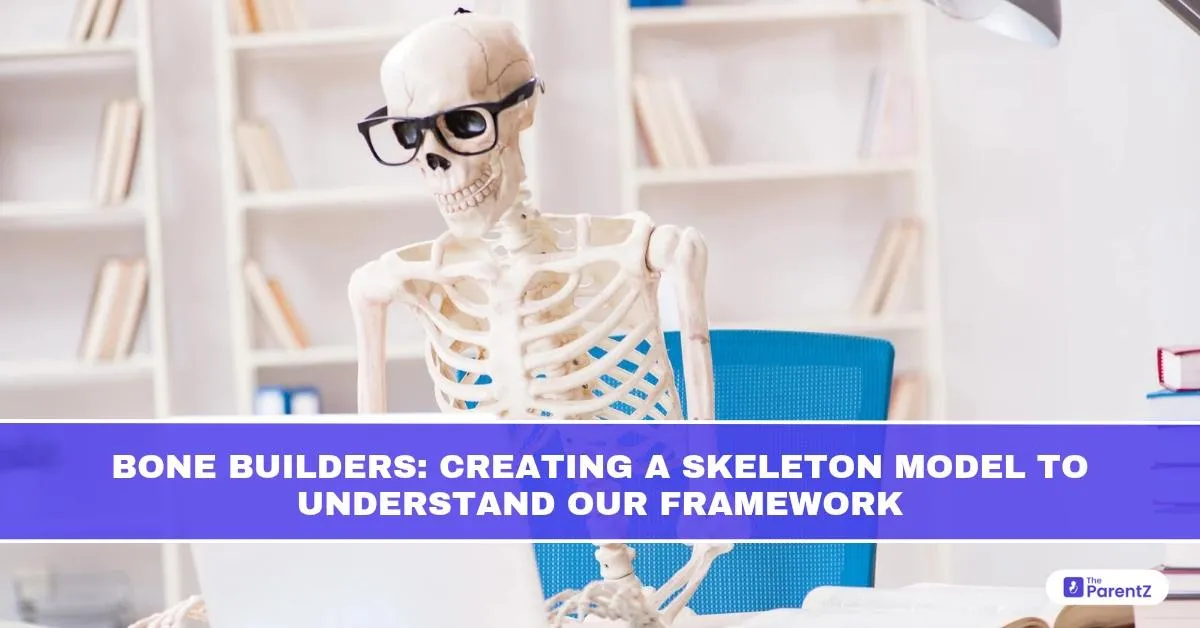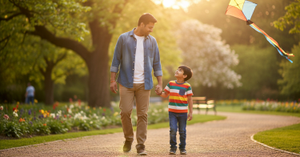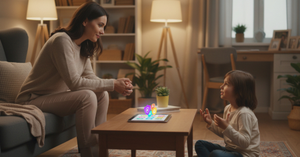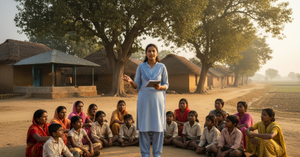“The human body is the best picture of the human soul.” — Ludwig Wittgenstein
When we think of bones, we often picture hard, white structures hidden beneath our skin quietly doing their job, holding us up, helping us move, and keeping our organs safe. But how often do we really stop to appreciate the quiet strength of our skeleton? And how often do we take the time to help our children understand that their own bodies are built on an incredible, intricate framework designed for movement, protection, and life itself?
This is where the “Bone Builders” DIY skeleton model comes in, a simple, hands-on project that invites children to explore the magic of their own body’s architecture. It’s more than just arts and crafts; it’s a moment to pause, to learn, and to marvel at how each bone, big or small, plays a vital role in keeping us strong, balanced, and alive.
Why Build a Skeleton Model?
A skeleton model may seem like a basic activity, but it holds layers of meaning. It’s a way to make the invisible visible—to help children see what’s beneath their skin, to touch and arrange the bones, and to realize that they are made of more than what they see in the mirror.
For many children, “bones” are something they hear about when they scrape a knee or hear a doctor mention an X-ray. Building a skeleton model allows them to connect those everyday moments to a bigger story, the story of how our bodies are built, how they grow, how they heal, and how we can take care of them.
It’s also an act of creativity. Whether using cotton swabs, paper cutouts, pasta pieces, or even popsicle sticks, building a skeleton model is an opportunity to transform simple materials into a living representation of the body, one that sparks questions, invites storytelling, and brings science to life in a way that books alone cannot.
The Framework of Life: Understanding Bones
Bones aren’t just hard sticks inside our bodies; they are living tissues, growing, repairing, and changing as we grow. They’re strong yet light, rigid yet flexible. Our skeleton is made up of 206 bones (by adulthood), all working together to support our weight, allow movement, and protect vital organs.
Here are some gentle facts to share with your child as you build the model:
- The skull protects the brain, like a helmet.
- The ribcage acts as a shield for the heart and lungs.
- The spine helps us stand tall and keeps the body balanced.
- The femur (thigh bone) is the longest and strongest bone.
- The hands and feet have tiny, intricate bones that allow fine movements like writing, playing, and even tickling!
Every bone has a role. And by placing each “bone” in the model, children begin to see their body as a well-designed puzzle, one that needs care, respect, and a little bit of love.
A Gentle Lesson in Care
Building a skeleton model naturally leads to meaningful conversations about how to maintain strong bones. You can talk about the importance of eating calcium-rich foods like milk, yogurt, cheese, and leafy greens. You can discuss how sunlight helps the body make vitamin D, which is essential for healthy bones.
And perhaps most importantly, you can remind children that movement keeps bones strong, whether it’s running in the park, dancing in the living room, or stretching during yoga. Bones thrive when we move, and every jump, skip, and stretch helps them grow stronger.
It’s a simple, beautiful message: Our bodies are made to move, and by moving, we care for our bones.
Building the Model: A Shared Experience
The joy of the Bone Builders project isn’t just in the final product; it's in the process. Sitting together, tracing outlines of arms and legs, cutting out shapes, arranging and naming the bones, laughing over how “funny” the pelvis looks, it’s a shared moment that strengthens not just learning, but your bond with your child.
You might find your child coming up with nicknames for bones (“the funny bone!”) or asking questions like, “Why do we need ribs?” or “What would happen if we didn’t have a spine?” These are the moments when learning comes alive, not as a list of facts, but as a conversation about life itself.
The Wonder of Our Skeleton
When the model is complete, it becomes more than just a collection of sticks or shapes on a page. It becomes a reminder of the miracle that is our body, a living, breathing structure that supports us, keeps us safe, and allows us to dance, jump, and hug the people we love.
It’s also a quiet invitation to care. To drink that glass of milk. To take that walk outside. To listen to the body when it says, “I need rest.” And perhaps to smile a little more in gratitude for the bones that hold us up, day after day.
A Final Thought
The Bone Builders project is a simple DIY that leaves a lasting impact. It’s a way to turn learning into play, science into a story, and anatomy into an adventure. It’s a reminder that our bodies are not just machines—they are part of us, and they deserve our kindness, our attention, and our care.
So gather your materials, sit down with your child, and start building. With each bone you place, you’re not just creating a model, you're creating understanding, curiosity, and a little bit of awe for the extraordinary framework that holds us together.








Be the first one to comment on this story.